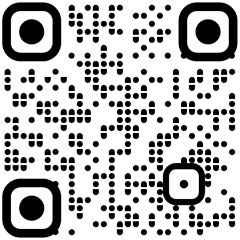The overall recovery rate till Q4FY24 was 32.10% implying a haircut of approximately 68%. The cumulative recovery rate has been on a downtrend, decreasing from 43% in Q1FY20 and 32.06% in Q1FY25 as larger resolutions have already been executed and a significant number of liquidated cases were either BIFR cases and/or defunct with high-resolution time.
However, a measure of the effectiveness of the code is the ratio of resolution to liquidation. With several initiatives to improve outcomes, the ratio has improved from 0.21 in FY18 to 0.71 in Q1FY25, according to a CareEdge report. The average time taken for resolution or liquidation continues to increase for operational creditors (OCs) and financial creditors (FCs) during the June quarter.
After slowing in the pandemic period of FY21 and FY22, the number of insolvency cases referred has increased by around 15% y-o-y in Q1FY25. However, despite the increase, the number of cases admitted to the insolvency process continued to be lower compared to earlier quarters in FY20. The distribution of cases across sectors remains broadly similar, compared to earlier periods given the extended resolution timelines.
Meanwhile, the number of ongoing CIRPs continues to be around the 2,000-case mark and manufacturing continues to account for the largest number of cases.
Post the implementation of the IBC, the overall recovery rate till Q1FY25 in India reached 32.06%. However, the recovery for Q1FY25 has increased from Q4FY24. Meanwhile, for the cases which have been resolved, the creditors have continued to face a haircut of approximately 68% on admitted claims. Some of the cases being disposed of are several years old. Thus, there is a huge amount of interest and overdue charges/costs admitted to such cases, inflating the overall claim figures.
The status of cases
The status of the cases has largely remained constant compared with the previous period. Of the total 7,813 cases admitted into CIRP at the end of June 2024:
Only 12.9% have ended in approval of resolution plans, while 25.3% remain in the resolution process versus 25.4% as of the end of March 2024.
Liquidation remains the most common path of closure under the IBC process. Over 2,500 cases have ended in liquidation (32.6% of the total cases admitted). Meanwhile, over 70% of such cases were either BIFR cases and/or defunct.
Around 15.3% (1,192 CIRPs) have been closed on appeal /review /settled, while 15.3% have been withdrawn under Section 12A. The primary reason for withdrawal has been either the full settlement with the applicant/creditors or other settlement with creditors.
Timelines continue to increase
The delays for CIRP closure are higher compared to Liquidation across various categories of stakeholders, but the corporate debtors take somewhat less time for resolution compared to the other two stakeholders (financial creditor and operational creditor).
On a sequential basis, the number of days has broadly increased across all categories. Of the close to 2,000 ongoing CIRPs, there has been a delay of more than 270 days for the completion of the process of 68% of ongoing CIRPs in June 2024 as compared to 61% in June 2022 and 65% in June 2023.
The share has broadly moved to the higher number of days tier. Further, we can observe that the ‘more than 180 days but less than 270 days’ segment is the smallest highlighting the fact that while more cases are being added and earlier cases too are moving forward, they seem to be delayed in the process.
Further, the share of ‘more than 90 days but less than 180 days’ and ‘less than 90 days’ segments have reduced.
CIRP additions grow at measured pace
The CIRP initiation scaled up rapidly till FY20 and dropped off in FY21 due to the pandemic. In FY22 and FY23, CIRP initiation commenced rising again. In FY23, the number of cases crossed the FY19 threshold, and although the number of cases in FY24 has been lower compared to FY23, the number continues to increase steadily. In Q1FY25, around 240 cases were admitted to the insolvency process. The share of CIRPs initiated by corporate debtors has reduced significantly over time and further, the number of cases initiated by operational creditors has reduced.
The number of cases admitted for CIRPs has increased each quarter since the launch of the IBC in 2016., highlighting the rising acceptance of IBC as an effective debt resolution mechanism. The admission of cases has increased y-o-y in Q1FY25 by around 15%, however, despite the increase, the number of cases admitted to the insolvency process continues to be lower compared to earlier quarters in FY20. Meanwhile, the number of ongoing cases has remained fairly steady at around the 2,000-case mark for the last couple of years.











